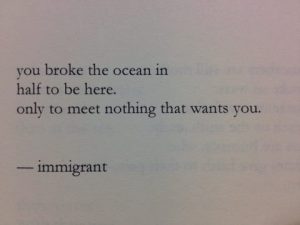In order to address this question you will need to refer to Sparke’s article, “A Map that Roared and an Original Atlas: Canada, Cartography, and the Narration of Nation.” You can easily find this article online. Read the section titled: “Contrapuntal Cartographies” (468 – 470). Write a blog that explains Sparke’s analysis of what Judge McEachern might have meant by this statement: “We’ll call this the map that roared.”
When Chief Justice Allan MacEachern was unfolding the map of Gitxsan and Wet’suwet’en territory, he declared: “We’ll call it the map that roared” (Sparke, 468). Sparke initially mentions other interpretations that branch the meaning of MacEachern’s words to “a derisory scripting of the plaintiffs as a ramshackled, anachronistic nation” (468). One notion he suggests that MacEachern refers to is the paper tiger, “in the immediate context of trying to open up a huge paper reproduction of the First Nations’ map” (468). The paper tiger is a Chinese idiom that is similar to the English meaning of ‘how its bark is bigger than its bite’. In this sense, a roaring map rather belittles the position of the Aboriginal peoples and devalues the Aboriginal title to their land. MacEachern is assuming that even from going into the Supreme Court, his side will be victorious because he ignores and calls the efforts of Gitxsan and Wet’suwet’en as futile.
As is mentioned here (which also gives a nice overview of the case history), from previous cases, the Supreme Court had acknowledged that there was an Aboriginal title, but was still deciding on whether or not such still exists. This was definitely a major pinpoint in history, where instead of using the traditions of oral storytelling, those who fought for the Aboriginal title used a map that represented the land as they know it. A land that ignored “the orientation systems, the trap lines, the property lines, the electricity lines, the pipelines, the logging roads, the clear-cuts, and all the other accoutrements of Canadian colonialism on native land” (468). This map was a statement for decolonizing as well as a means of uniting the reality of both colonizers and the colonized. The case was bringing these aspects together, so perhaps it was natural for MacEachern to retaliate in that manner.
The act of roaring itself can re-establish the concept of noble savage, or the Vanishing Indian, who MacEachern realizes from trials of erasure, has come back not as a ghost (what the American invaders would have wanted) but as a collective effort of rebuilding and reclaiming what is theirs. However, he fails to understand and ultimately dismisses all claims from Gitxsan and Wet’suwet’en because from the way he sees it, Canadian life began at the “establishment of the colony” (470). MacEachern assumes this is a war that, for him, has already been won. His improper, demeaning manner speaks of his ignorance as a colonizer in court, and makes a poor example of the role he takes as Chief Justice.
Grant, who was lead counsel for the Gitxsan and Wet’suwet’en (he describes Delgamuukw’s legacy) refers to Justice Vickers, who mentions that “courts must undergo their own process of de-colonization.” When MacEachern declares the map as one that roars, he is clearly refusing to adjust his eyes to another perspective. At the same time, MacEachern could be acknowledging the potential power of the map and the possibilities it can initiate, if possessed in the right minds and hands. His comment was not only a sign of disapproval, but a reaction from his own discomfort as it suggested a reality where he felt displaced.
Works Cited
Grant, Peter. “The Anniversary of Delgamuukw v The Queen: Two Legacies.” TheCourt.Ca, Osgoode Hall Law School, 10 Dec. 2007, http://www.thecourt.ca/2007/12/the-anniversary-of-delgamuukw-v-the-queen-two-legacies/.
Hanson, Erin. “Aboriginal Title.” indigenousfoundations.arts.ubc.ca, First Nations and Indigenous Studies, accessed 17 Oct. 2016, http://indigenousfoundations.arts.ubc.ca/home/land-rights/aboriginal-title.html
Sparke, Matthew. “A Map That Roared And An Original Atlas: Canada, Cartography, and The Narration Of Nation.” Annals of the Association of American Geographers, 88.3 (1998): 463-495. Web.
Wabiskaoskenzhio. “The Vanishing Indian.” Wabiskaoskenzhio’s Blog, WordPress.com, 17 Oct. 2016, https://wabiskaoskenzhio.wordpress.com/2010/08/02/the-vanishing-indian/.


